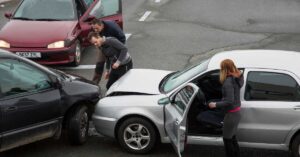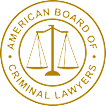Who Is Responsible in Collisions Involving Autonomous Cars, and How Is It Determined?

Collisions involving autonomous cars present a newfound gray area in the world of legal liability. These vehicles are certainly not perfect, and they are still responsible for accidents from time to time. But how do you seek compensation from a machine?
While regulations around self-driving cars are continuously evolving, this guide offers insight into determining liability in this type of accident.
Potentially Liable Parties in Accidents Involving Autonomous Cars
Just because a human was not controlling the vehicle when an accident occurred does not mean the vehicle is not at least partially responsible. However, holding an autonomous vehicle liable for an accident looks a bit different than submitting an insurance claim against a human driver.
You will first need to determine which party you can hold responsible for the vehicle’s error. Any of the following might share at least partial liability:
- Vehicle manufacturer: Often, the manufacturer is liable for these accidents because it made a mistake during production that led to the crash. Manufacturers have a responsibility to conduct the necessary testing to ensure an autonomous vehicle is safe on the road.
- Human operators: At this stage, autonomous vehicles often still have human operators who are responsible for sitting behind the wheel, inputting the destination into the vehicle, and completing other basic tasks. The human operator may be at fault if they interfered with the vehicle’s controls, failed to adhere to the car’s warning signals, or otherwise contributed to the accident.
- Government agencies: Certain government agencies, like the National Highway Traffic Safety Administration (NHTSA), are responsible for regulating the use of autonomous vehicles on roadways. If this agency or a similar one allowed a certain model of self-driving car to lawfully hit the road yet failed to conduct the appropriate testing to ensure its safety, you may be able to hold that agency liable.
How Is Liability Determined in Self-Driving Car Accidents?
Determining liability in collisions involving autonomous cars is a very similar process to pinpointing the liable party in any other type of crash. The relevant insurance companies will investigate the accident to determine how it happened. Thankfully, many autonomous vehicles contain black box systems that record and store their activity, allowing investigators to see what the vehicle was doing leading up to the crash.
This information, along with photos and videos of the accident, witness testimonies, and crash analyses, can paint a clearer picture of what occurred. If the autonomous vehicle caused the accident, the next step is determining which party to hold liable. This may require investigators to dig deeper into why an error occurred: Did the driver interfere with the settings, or was the vehicle programmed incorrectly?
Seeking Compensation After an Accident Involving an Autonomous Vehicle
If you were involved in a collision involving an autonomous car, hiring an experienced attorney should be your first step. They can help you determine how to seek compensation.
Generally, you would file an insurance claim with the liable party’s insurance company. Your attorney may need to file a subpoena for black box data and other evidence from the self-driving car to use toward your claim.
If an insurance claim fails to provide a reasonable payout, the next step may be legal action.
Let Our Experienced Attorneys Guide Your Case
Insurance claims and lawsuits for AV crashes represent a largely uncharted territory. You need a legal team experienced in collisions involving autonomous cars and committed to leaving no stone unturned in the compensation process.
At Cantor, Wolff, Nicastro & Hall, we’re well versed in the current guidelines surrounding negligence in AI driving. Schedule a free case evaluation today by calling 716-848-8000 or filling out our online form.
Frequently Asked Questions (FAQ) about Collisions Involving Autonomous Cars
Q: Who can be held responsible in collisions involving autonomous cars?
A: Potentially liable parties include the vehicle manufacturer, human operator, or even government agencies like the NHTSA, depending on the accident’s cause.
Q: How is liability determined in self-driving car accidents?
A: Investigations use black box data, photos, videos, witness testimonies, and crash analyses to determine if the vehicle’s programming or human error led to the collision.
Q: What should I do after an accident involving an autonomous vehicle?
A: Hiring an experienced attorney is crucial for filing insurance claims, gathering evidence like black box data, and potentially pursuing legal action for compensation.

 716-848-8000
716-848-8000


